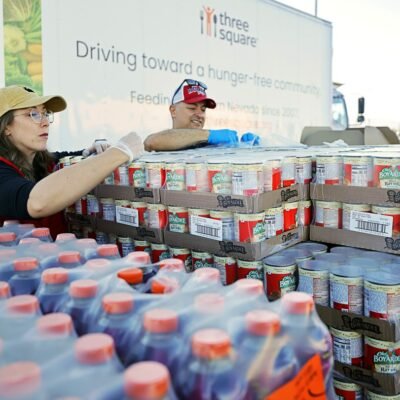Researchers have revealed the twisted ringbot, soft robots capable of engaging in three simultaneous behaviours
Unlike traditional robots, these devices operate independently without human or computer control, showcasing the potential for navigating and mapping unknown environments.
How are twisted ringbots constructed?
The twisted ringbots are constructed from ribbon-like liquid crystal elastomers, resembling a twisted rotini noodle, and joined together at the end to form a loop resembling a bracelet.
When placed on a surface heated to at least 55 degrees Celsius, the ribbon contracts where it touches the surface, inducing a rolling motion. The warmer the surface, the faster the robot rolls.
How does the ringbot work?
Jie Yin, the corresponding author of the research paper and an associate professor of mechanical and aerospace engineering at North Carolina State University, explains, “The ribbon rolls on its horizontal axis, giving the ring forward momentum.”
The twisted ringbot spins along its central axis, similar to a record on a turntable, while moving forward in an orbital path around a central point.
One of the standout features of the twisted ringbot is its ability to navigate along boundaries, making it ideal for mapping unknown environments.
Yin notes, “If the twisted ringbot encounters a boundary, like the wall of a box, it will travel along the boundary.” This behaviour holds promise for mapping confined spaces with complex geometries.
Physical intelligence
The twisted ringbot exemplify physical intelligence, where their actions are determined by their structural design and the materials they are made of, rather than relying on a computer or human intervention. Researchers have demonstrated the ability to fine-tune the behaviour of these soft robots by manipulating their geometry.
For example, the direction of the twisted ringbot’s spin can be controlled by twisting the ribbon in one direction or another. Varying factors, such as the width of the ribbon and the number of twists, influence the robot’s speed.
Introducing two twisted ringbots into one environment
In proof-of-concept testing, researchers showcased the twisted ringbot’s ability to follow the contours of various confined spaces. Fangjie Qi, the first author of the paper and a PhD student at NC State, highlights their success, saying, “Regardless of where the twisted ringbot is introduced to these spaces, it can make its way to a boundary and follow the boundary lines to map the space’s contours.”
The researchers mapped the boundaries of more complex spaces by introducing two twisted ringbots, each rotating in a different direction.
This approach allows the robots to take different paths along the boundary, enabling the capture of contours in more intricate environments.
Soft robotics is still a relatively new field, and the development of twisted ringbots represents a significant stride forward. Yin expresses excitement about advancing the understanding of what is possible in soft robotics, emphasising that finding new ways to control the movement of these robots in a repeatable, engineered way is key to progress.






